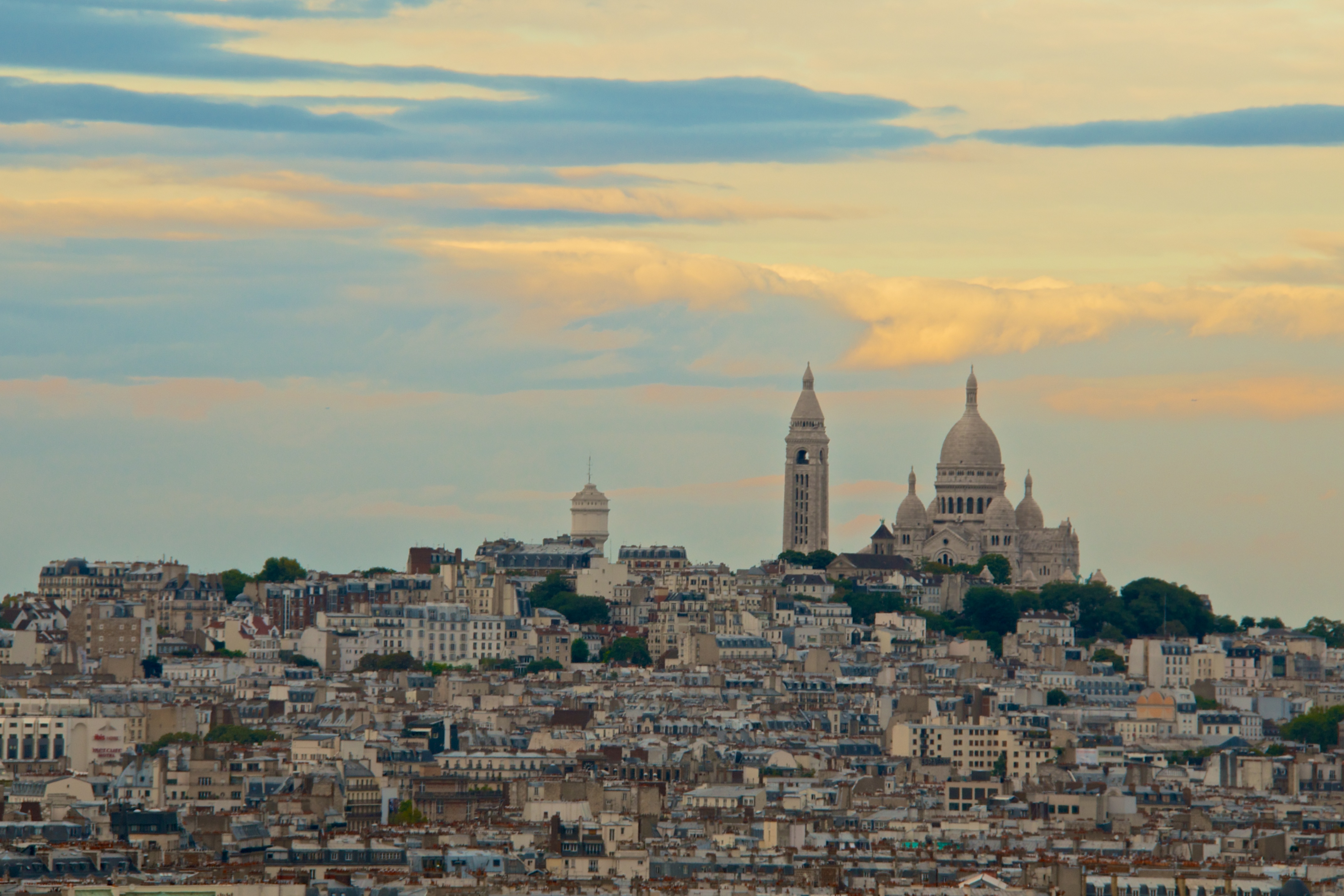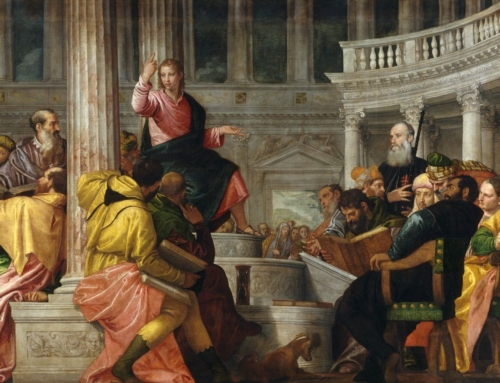The thumb and forefinger of God pinched up the northern part of Paris. The terrain rises above the Seine and is now crowned by a white, honeycomb dome: Sacré-Coeur. Anglicized it’s known as the Church of the Sacred Heart, and its beehive silhouette dominates the panorama of the 18th arrondissement. The hill it caps is Montmartre – the mount of martyrs. It was appropriately named as the site of the decapitation of St. Denis (a third-century bishop). The impressive structure that reaches up to the heavens sprang up from the same earth that received this holy man’s blood. Tertullian’s words ring true once again, “the blood of the martyrs is the seed of the Church.”
As colorful and enriching as the history of Montmartre is, so too is the history of the devotion to the Sacred Heart of Jesus (today’s solemnity). The devotion spans across the centuries. It was planted in the Mediterranean soil of the Fathers, germinated within a German abbess, and blossomed in a French Visitation Sister, St. Margaret Mary Alacoque. Perhaps the devotion reached its zenith when Pope Leo XIII decreed that the whole world should be consecrated to the Sacred Heart of Jesus.
The connection between the devotion and the perched church goes beyond a mere naming. The white stone church acts today as a sign of the merciful heart that climbed the mountain of the Lord 2,000 years ago. By looking into the meaning of “sacred” and “heart” we can gain a better understanding of this devotion and the significance of this particular church which is indicative of the whole Church.
Something sacred is set apart from what is profane. Firm believers in the goodness of creation, we know that profane need not mean something debased. After all, the created world reflects the glory of God. Yet, sacred things magnify God’s glory. Let us not forget that man is the most sacred creature in corporeal creation, and he has been given dominion over it. Therefore, man in a unique and particular way reserves places, times and buildings from the profane. This happens by consecration, usually by means of a ritual. Immediately, Church and religion jump to the forefront of our minds. Vessels, feast days, gravesites, and chapels all are great examples. However, there are less liturgical events that give insight to consecration. For example, the shedding of blood at Gettysburg rendered those fields arid to any profane use. They took on a new character after the battle, and they’ve been reserved as a memorial to the lives lost in war. The shedding of blood has a power to change a place, date, and time forever.
When the Church speaks of heart, she’s not using a twenty-first-century term. It’s not just the principle organ of circulation or the symbol of longing. It’s much more than that. The heart is the seat of love. When the object of your love is seen, the first noticeable movement is a heaving chest. Prior to modern biology, the will was thought to be carried out through the heart. This ancient connection of the organ to the will is much like our modern association of the brain to the will. All actions in the body flow from this organ with the will as its principle. It’s where the incorporeal soul meets the corporeal flesh. The heart represents the mystery of the human person composed of immaterial and material. It’s a union so fine that only the Word of God can discern it.
Therefore, when mentioning the heart of Christ, the Church is speaking of His whole humanity: body and soul, action and emotion, thought and prayer. Truly then His heart is sacred. For, He is the Christ, the holy one anointed with the Spirit. Consecrated, He proclaimed, The Spirit of the Lord is upon me. Wherefore he hath anointed me to preach the gospel to the poor (Lk 4:18). He was wholly and devotedly reserved to the will of the Father, being obedient unto death, even death on a cross (Phil 2:8). He even denied Himself saying, Not my will, but thy will be done (Lk 22:42).
Christ’s Sacred Heart was the most sacred thing to walk this earth, followed by the Immaculate Heart of Mary (tomorrow’s memorial). Though the sacred is usually kept from the profane to preserve its sanctity, we see Christ constantly amongst the profane. Sinners, lepers, prostitutes, the dead; nothing is safe from His touch. Nothing takes His sanctity from Him, even when a poisoned tip pierced His innermost part. His heart was not profaned. Rather, he who pierced Him was washed and consecrated by what flowed forth, Christ’s mercy.
This is the characteristic that Sacré-Coeur captures, and what the Church strives to do. It is the most sacred amidst the most profane. For, although Montmartre is the mount of martyrs, at its base is also the Parisian red-light district. At its top, on the holy ground consecrated by the blood of the martyrs under the great dome is all-night eucharistic adoration. On the lower parts of the hill in the night, people deny their dignity and chase after depraved gratification. Though amongst profanity, this sacred place is flooded with light in the night sky, inviting those mired in sin to enter and be redeemed.
✠
Image: Sacré-Coeur seen from l’Arc de Triomphe, Wikipedia Commons







